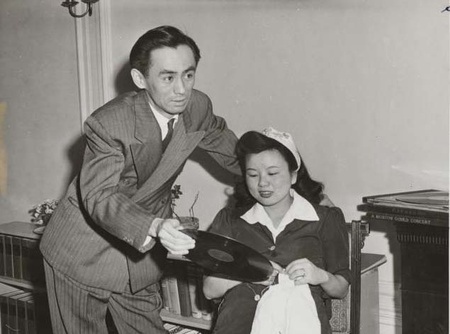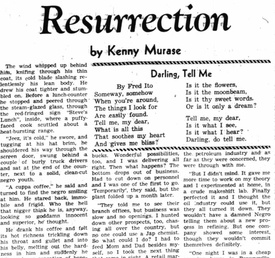In the wide world of American racial epithets, one word seems to stand apart as uniquely hateful and wounding: the term euphemized as the “N-word.” Applied to African Americans, it is a corruption of the term Negro—a term that has gone through its own complex history. Like the Nazi swastika, the Confederate flag, or the flaming cross, the “N-word” represents such a toxic symbol of prejudice that even neutral utterance of it, especially by nonblacks, is taboo. (There are hate words in other societies that have their own special power: author Greg remembers being told as a child to never, ever use the word baka with Japanese chums, as it was horribly insulting and could spark a fight).
For fear of encouraging misuse, scholars tend to shy away from dealing with the “N-word” in academic discussion, whether used directly or euphemized. Still, given the prominent place of the term in American culture and race relations, its history and the diverse meanings assigned to it certainly merit serious study. In this article, we will examine the usage of the “N-word” in the English-language Nikkei press during the years leading up to 1942, with emphasis on the West Coast newspapers.1
Uses of the N-word in the prewar Japanese American press can be roughly divided into three different types. The first type are literary pieces. A number of Nisei writers added the N-word to their stories in order to lend them a feeling of “authenticity” or to add shock value. For example, the anonymous sketch, "Zip-Biff-Pow," which ran in New World in 1933, describes a run-in between two youths on a San Francisco street corner—the Nisei calls a Black teenager the “N-word,” whereupon the African American shouts an anti-Asian epithet back at him. The two start brawling, until a “colored gentleman” shames them into stopping in the name of nonwhite solidarity. The two finish by shaking hands and separating.
In his short story, entitled “Resurrection,” which appeared in the December 17, 1939 issue of the Los Angeles daily Kashu Mainichi, Nisei writer Kenny Murase depicts a scene between a Japanese American, Shiro Katayama, and an African American, Jim Baldwin. Shiro is initially offended by Jim’s smiling at him, and thinks to himself “you goddam n***er,” but then recognizes him as a former college classmate and banishes such hostile thoughts.
Their ensuing dialogue reveals their common trouble facing racial discrimination in American society. Jim Baldwin complains that despite all the economic and political progress of black Americans, in the eyes of white society, “We’re still n***ers, and will be indefinitely.” Nevertheless he expresses pride in his racial identity. (It should be noted that Murase demonstrates clairvoyance in giving the name “Jim Baldwin” to his protagonist. Within a decade after the story’s publication, a towering African American intellectual named James Baldwin would begin his real-life career).
In other cases, the “N-word” appeared in material taken from outside publications (such as syndicated columns). Reprints of extracts of works from past writers like Ambrose Bierce retained their original language, including the N-word. Nisei newspapers, especially in erlier years, ran racist caricatures in comic strips and used racist dialect jokes as filler (in many cases, they used dialect variations on the “N-word” such as “N***ahs”).
A separate category of writings in the prewar Nikkei press which featured the “N-word“ was that of essays. In these, the word generally appears in quotes by other people or paraphrases of their views, and is clearly deployed in order to illustrate (and deplore) their racism. For instance, during 1940-1941, Kashu Mainichi printed a series of columns, “From Town to Town,” by Nisei journalist Joe Oyama. In them, Oyama recounted his travels in Mississippi and Alabama, documenting his experiences with the blatant racism of the Jim Crow South. Oyama used the N-word repeatedly in recording the racist language and attitudes of the whites he met. In his March 3, 1940 column, Oyama cited his conversation with a white gas station attendant in Jackson, Mississippi. When asked about a recent lynching, the attendant vividly recalled the incident: “Yea, ‘bout two years ago —about fifteen miles south of here in the hills – a couple of n***ers got lynched. The mob used torch-blowers on them.” Oyama informed another attendant that in Los Angeles, “there are n***er policemen,” to which he responded, “there’s don’ gonna be plenty of trouble!” if one arrested him. Oyama travelled on to Birmingham, Alabama, where he compared the white supremacist mentality to Hitler’s Aryanism policy.

In March 1941, following his return to California, Oyama published an article titled “I don’t think we should laugh…” that underscored the prevalence of racism against African Americans outside the South, and the hypocritical attitudes of complacent whites. Oyama cited a case of discrimination that he had witnessed firsthand in Los Angeles. When an African American sat down to eat in a restaurant, a white customer called the police. After the police arrived, an officer told the restaurant owner, “You had no business letting a n***er come in here. There shouldn’t be any place in America serving n***ers.”
Some of these illustrative uses of the “N-word” were ironic. In an essay published in Rafu Shimpo in 1937, Nisei writer Carl Kondo narrated the prejudice facing mixed-race Japanese Americans, and presented his commentary from the perspective of an African American: “But it sure is tough to be an ainoko, which is Jap for halfbreed. You got no chance with the whites ‘cause you’re a Jap an’ you ain’t got no chance with the Japs ‘cause you’re white--partly. If you’re Chink, or N***er or P.I. it’s worse.”
A third category of writings in the prewar Nisei press was more unconscious, as it involved the use of the “N-word” in common expressions of the time, such as “n***er in the woodpile” (for something unexplained and suspicious), “n***er heaven,” (referring to the segregated balcony sections of theatres), the game “n***er baby” (a variant of dodgeball), or in a familiar children’s rhyme (later retitled, “Ten little Indians”). In the September 7, 1932, issue of Kashu Mainichi, the columnist “Montage” used the phrase “Last one is the n***er baby” to describe the rush by the Soviet Union and other European powers to deal with Manchukuo, the new Japanese-backed (puppet) state in Manchuria.
In a few cases, the word appeared as a nickname. For example, Shin Sekai reported in 1932 on an ice skating contest and made fun of the skating of a few contestants, who were identified as: “Blackie, N***er, hJim, Sam, and George.” Meanwhile, a number of Hawaiian Nisei athletes, most notably golfer Isami “N***er” Higashi, took the name. Higashi’s prominence within Hawaii’s golf circles meant that his nickname appeared regularly in the sports sections of Hawaiian newspapers. A 1929 article in Hawaii Hochi mentioned a football player, “Niger” Shimokawa, but it is not clear how the nickname was pronounced (or if it was a misspelling).
Although the N-word epitomizes anti-blackness, the derogatory Japanese terms “kurombo” and “kuro-chan” for African Americans also appeared in the pages of Nikkei newspapers. As far back as 1929, Rafu Shimpo printed an article calling out Japanese Americans for their widespread use of the phrase “kurombo,” which was not only offensive, but hypocritical in view of their own anger over the use in mainstream media of the racist term “Jap.” A decade later Mary Oyama, Joe Oyama’s sister, reminded the readers of her Rafu Shimpo column “Daily Letter,” that “We who resent being called “Jap” should never use the word “Chink” in reference to the Chinese, or “n***er” or “kurumbo” for the Colored people. Isn’t “kurombo” the equivalent of “darky,’ which isn’t very flattering?” Despite the complaints, such language long remained in popular use. In fact, one actor in a travelling shibai (drama group) organized by the Central California YMBA used the moniker “Kurombo Joe Louis” Sakaguchi, in homage to the celebrated heavyweight boxing champion.
A survey of the prewar Japanese press is especially illuminating in regard to racial language and hate speech. The writings of the young Nisei, who were immersed in American culture but also themselves subject to racist exclusion, both reflected the influence of mainstream attitudes and critiqued them as they appeared in American society and within the Japanese American community. Understanding the usage of racial language not only reveals the inherent presence of racism, especially anti-blackness, within American society, but also its effect on immigrant communities.
Note:
1. While Hawaiian Japanese American newspapers, like the Nippu Jiji, more frequently printed the “N-word” in their pages, such usage arose primarily in reprints of news articles and syndicated newspaper columns from the mainland, and thus represented mainstream attitudes more than specifically Japanese American ones. In any case, given the small presence of African Americans – roughly 200 to 400 – in Hawaii and their comparatively high social standing on the islands, the language issue had a different meaning there. As a result, we have largely put aside the press in Hawaii for the purposes of the present discussion.
© 2021 Jonathan Van Harmelen, Greg Robinson










